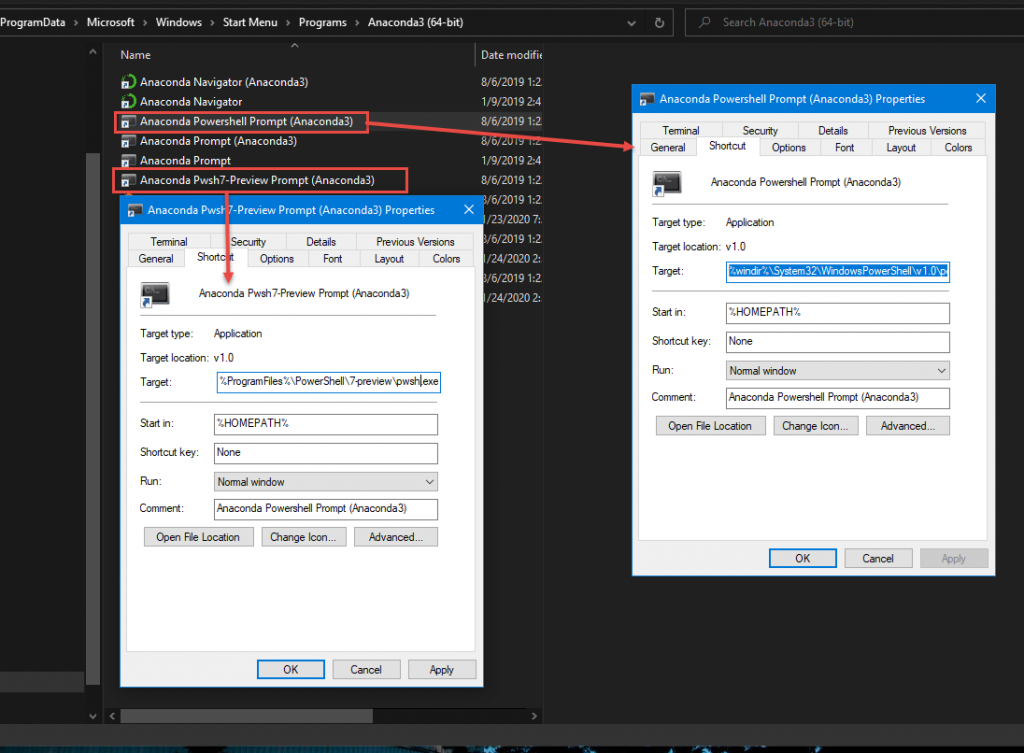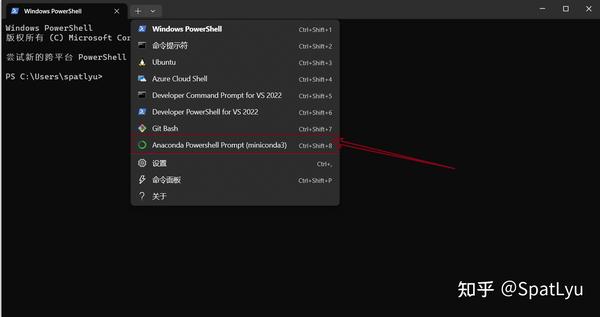
- Anaconda powershell install#
- Anaconda powershell update#
- Anaconda powershell verification#
- Anaconda powershell windows 7#
You should no longer see “conda is not recognized as an internal or external command, operable program, or batch file” error. Learn to use conda in 30 minutes at bit.ly/tryconda TIP: Anaconda Navigator is a graphical interface to use conda. When you get the “Advanced Installation Options” window, select Add Anaconda to my PATH environment variable and click Install.Īfter the installation is complete, type “conda” in the command prompt.
Anaconda powershell install#
Step 4: Run the downloaded file and follow the wizard to install Anaconda for Windows. Step 3: Visit the official website of Anaconda for Windows to download the latest Anaconda distribution. Right-click it and select Uninstall, and then follow on-screen prompts to uninstall it. Step 2: In the Programs and Features window, scroll down to find Anaconda. Step 1: Press the Win + R key to open the Run dialog. Reinstall Anaconda with an advanced option that will automatically add all Anaconda to your PATH environment variable. If you still get the “conda is not recognized as an internal or external command, operable program, or batch file” error, try the next method. Powershell shortcut creator for Windows (using menuinst) Conda.

Step 3: Wait for the process to complete, then close the Anaconda Prompt and open the CMD window. This is the preferred method because this will affect only conda and not the system environment variables.
Anaconda powershell update#
Step 2: In the Anaconda Prompt program, run the following commands and press Enter after each command to update Conda to the latest version: condarc file to include the proxyservers key. Step 1: Access the start menu in the lower left corner and search for “ anaconda“. Some users reported that they were able to run conda commands in the command prompt after updating Conda to the latest version. You may encounter this issue if you are using a newer Anaconda Navigator version with an older Conda version. Read More Fix 1: Update Anaconda to the Latest Version

Anaconda powershell verification#
We do not recommend using MD5 verification as SHA-256 is more secure.
Anaconda powershell windows 7#
I installed Anaconda3 4.4.0 (32 bit) on my Windows 7 Professional machine and imported NumPy and Pandas on Jupyter notebook so I assume Python was installed correctly. SHA-256 checksums are available for Miniconda and Anaconda. Fix 1: Update Anaconda to the Latest Version Download Anaconda Distribution Version Release Date:Download For: High-Performance Distribution Easily install 1,000+ data science packages Package Management Manage packages.In this post, MiniTool Partition Wizard puts together some solutions to this problem. Your Jupyter notebook should now start in your desired folder, if not bear with me you can try this second method.Some users reported that they encountered a problem while running an Anaconda command using Command Prompt, and they got a message “ conda is not recognized as an internal or external command, operable program or batch file”. Make sure to remove the hash mark # before and replace the line by by c.NotebookApp.notebook_dir = 'Disk:\\your\\desired\\working\\directory' T hen o p en thi s file in any Editor and search for the following line: “c.NotebookApp.notebook_dir” This will generate a file to your user default directory: C:\Users\username\.jupyter\jupyter_notebook_config.py

Open the windows powershell prompt or the powershell Anaconda prompt and type the following: jupyter notebook -generate-config Installing a conda package Enter the command: conda install package-name. I have two laptops with Anaconda installed on both and I had some issues to find a working solution to configure the start in folder of Jupyther so I though it’d be a good idea to post the two solutions that worked for me. Open an Anaconda Prompt (terminal on Linux or macOS) and follow these instructions.


 0 kommentar(er)
0 kommentar(er)
